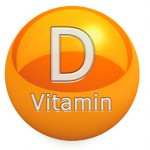The investigators then evaluated the effects of vitamin D treatment on clinical signs and symptoms of early RA in 18 patients per group (standard treatment with or without cholecalcipherol). As expected, they found that standard treatment significantly reduced Disease Activity Score 28 (DAS28), C-reactive protein (CRP), erythrocyte sedimentation rate (ESR) and Visual Analog Scale for Pain (VAS pain). Although standard treatment had no effect on T helper subset, osteoclast precursor cells or the majority of clinical signs and symptoms, it did reduce levels of IL-23. Adjunctive treatment with vitamin D had the added benefit of improving global health, relative to standard therapy alone, as evaluated on a numeric scale.
Lara C. Pullen, PhD, is a medical writer based in the Chicago area.
Reference
- Buondonno I, Rovera G, Sassi F1, et al. Vitamin D and immunomodulation in early rheumatoid arthritis: A randomized double-blind placebo-controlled study. PLoS One. 2017 Jun 5;12(6):e0178463. doi: 10.1371/journal.pone.0178463. eCollection 2017.

